
I've talked before about many of the aspects of design, art, and tech that were sexy enough to more or less *be* marketing. I'm gonna avoid talking about that stuff here. This is the Unsexy Zone for production-minded devs and the ultra-curious. Sexy stuff lives on the Steam page for now. If you open up the updates and then scroll forever you'll eventually get to the era of 'using design blogs as marketing.' I also kept a tigsource devlog between 2018 and 2019, which might have some interesting design stuff, dunno.
Sales
Posting raw numbers feels dishonest and would make us look like we're doing better than we are. Here's the gross royalties the team actually shares amongst ourselves. This doesnt include taxes because those are calculated per individual's tax bracket, but assume like 15-25% probably.
- Q4 2020 - $22k
- Q1 2021 - $12k
- Q2 2021 - $7k
I don't know how much I want to expose of my teammates finances, but I'll say that I personally get ~75% of this. We split royalties based on raw hours and Tenderfoot was mostly mine for so long that my hours are absurdly high, 6300ish out of 8150 hours or so total. I also pay out our PR agency from my cut, and use my cut to fund translations. All our games have been made on this unfunded, hour-based-royalties model, and I still get support from several old games, so this isn't my only source of income, don't worry.
~95% of our income is from Steam, ~5% from itchio.
Marketing
I announced TT way too early with gifs and videos of extremely unimpressive early builds, to the audience of artgames ppl who'd followed us from Eidolon. They really didnt care at all.
Here's the earliest, stupidest version of it, apparently from 2015:
I mean I can't blame them. It really looks like shit. Nothing to be excited about here at all, unless you're the dopey kid actually making this game, and you really really want to make a 'tactics game' for some reason.
And then here's my first real attempt to do a splashy announcement teaser:
This one has some amazing music from Michael, is a little more visually directed (maybe not very well, but it's doing Something), and at least a spirit shows up, but with no explanation at all of what it represents, so I'm not sure why I imagined people would think it was.. interesting? Oh and there's fire.
I spent a few years after these big bellyflops just sorta tweeting gifs occasionally, which is a kinda fun way to make a project, and probably could be good marketing if I'd executed on it better, and if Tenderfoot was a more coherent pitch for an audience to actually get excited about. From a more personal angle, it's just hard not to show anyone what you're up to, and it's kind of depressing oversharing with the people close enough to you in real life to show this stuff to, especially since most people in my life have no interest in this kind of game. Anyway I have all these gifs so maybe I'll pepper some through this blog :)
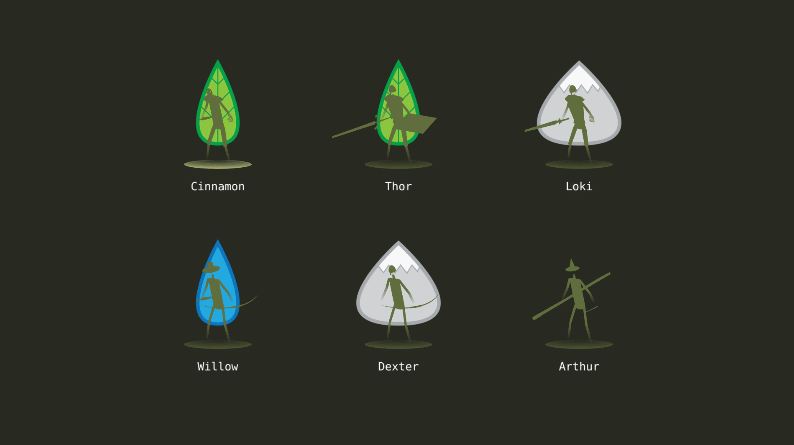
Eventually I decided to hire a PR agency because I wanted to try to focus on development. This was a great idea in some ways (the game is way better because we could focus more on it and less on PR) and not in others (the project wasn't competitively profitable and so the % that went to PR was not really fair to the rest of us.. the free market strikes again.. should note they did a great job and even gave us a deal but we're just poor and I dunno, unprofitable. I'm really grateful they took a chance on us, though). We also brought on Madison to help with trailers and social and this was an amazing decision, made less complicated because she's on the same hours/revshare system as the rest of the team.
The best things we did were make good trailers, make good prologues timed to release with Steam demo festivals, write Steam update blogs, and get our release date announcement trailer into the Future Games Show (thank you to our PR agency for that huge one!)
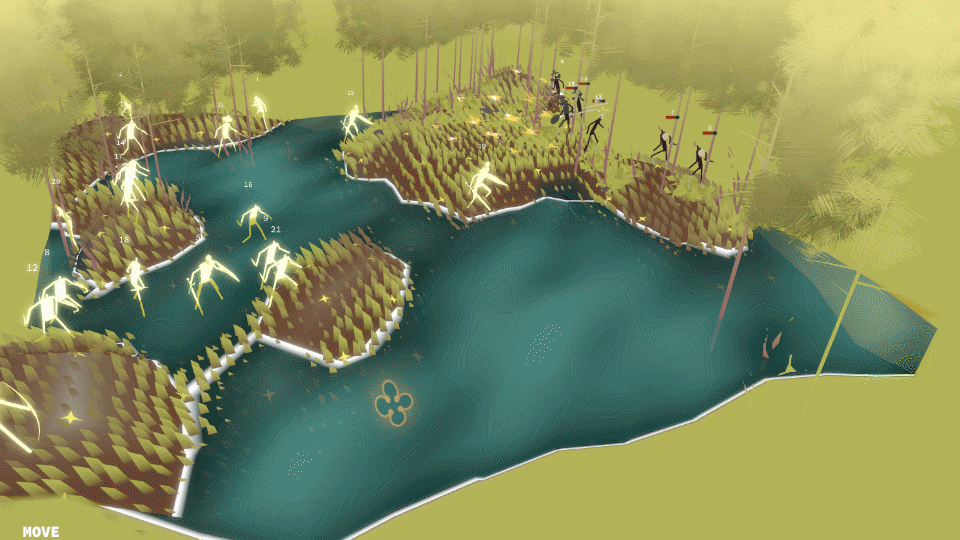
Story
From its origins, Tenderfoot was more interested in themes and mechanics than story persay. There was always deep lore, but not a lot of clarity around uhhh who the characters are, what motivates them, what events take place, what the resolution in the end is. Endings especially are hard for me, not something I have historically thought about *at all* until it becomes obvious that, without them, a story feels incomplete. Tenderfoot's script kept needing massive rewrites, and really isn't something I'm terribly happy with in the end. The final script is something that works for what it is, and doesn't get in the way, but I think the heart of Tenderfoot is in its themes and how they reflect on the play.
I think generally writing story on top of systems is a bad way to write story. I read a lot of advice about story construction while struggling with Tenderfoot, and my working model now is that events in a story should be driven by the internal logic of the story: by character motivations especially. I like Philip Pullman's image of a story as a path through a forest. The writer is designing a forest which appears beautiful and rich and interesting from each point on the path, as well as building the path itself. If you build the whole forest first you likely are building large areas which may never be seen from the path, or even a forest which obstructs potentially good paths, but you do need *some* forest to be built as you design the path, or else there's no views to even aim for. Generally it makes sense to build the forest as needed from the path, and to turn the path in response to that forest. So it's a process that needs some freedom from other constraints, because it's a self-constraining process.
Game stories are potentially much stranger beasts, forests with many interconnecting paths, or forests with no paths at all. Many games construct their own forests and paths during play. Most at least construct new paths per play session. The metaphor gets really stretched but I think it's a nice image anyway.
I want to make a more storylike project next, so currently we're writing story before and alongside systems dev. Seems much easier and better so far. At the very least, I think it's wise to have a confident outline very early on.
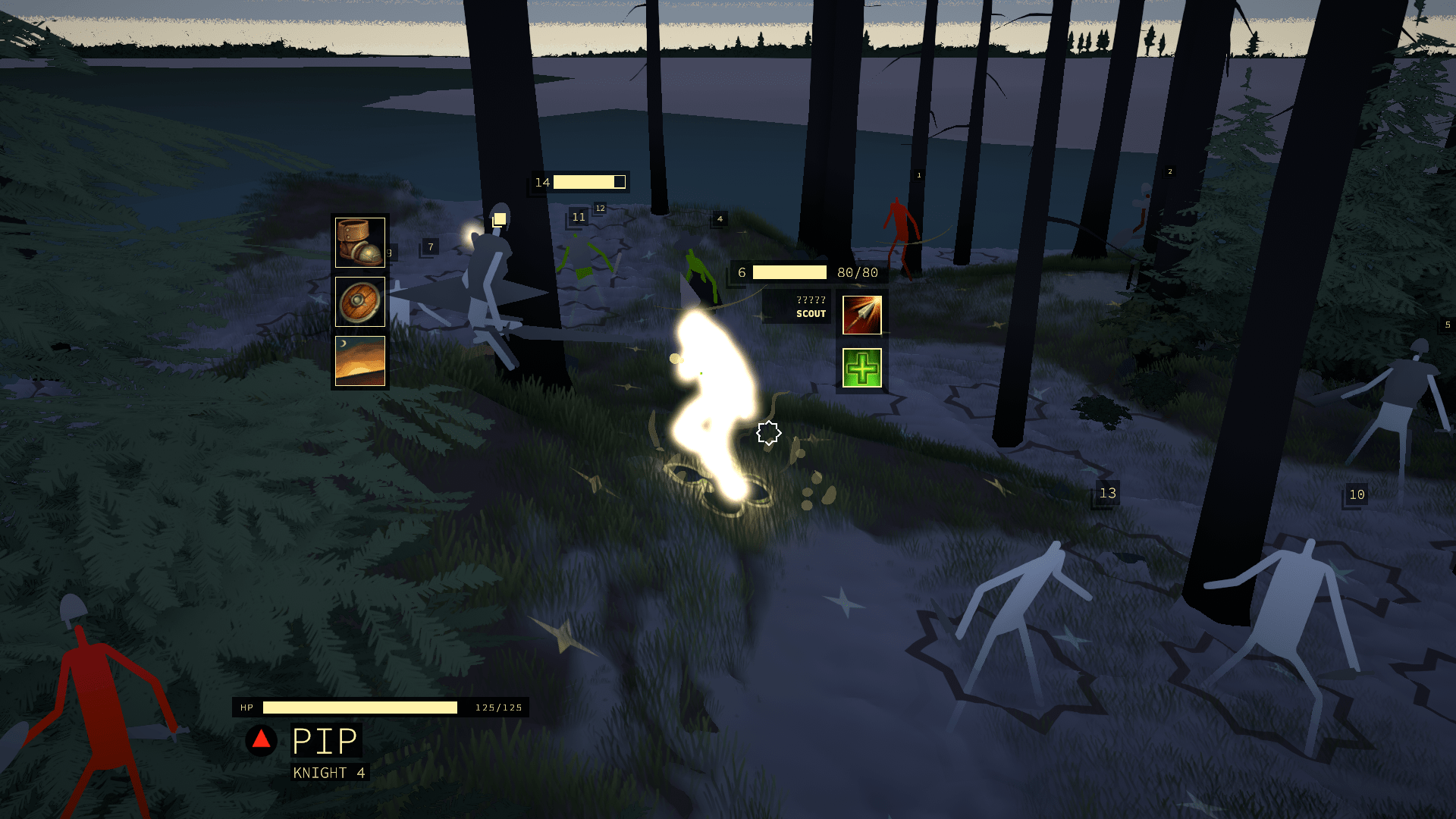
Prologues
We did three of these for Tenderfoot. Good new part of the development cycle. Test out the engine (sorta like a vertical slice but if a vertical slice was creative and cool and wild and fun). Test-build an audience and get feedback from that *real* audience. Release SOMETHING! Feel the thrill of being an artist whose work is being actively engaged with! Plus, the glory of building a multi-experience constellation universe! Definitely planning to do this again.
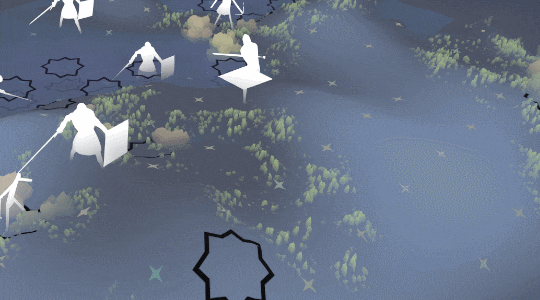
Discord Beta
We also ran a semi-private beta in the month leadup to release. What a fucking joy. The real heroes of Tenderfoot are these beta testers, whose names are in the credits. This was the full extent of our off-team QA, to the degree it can be called QA. We played Tenderfoot extensively throughout development, so it was more or less stable for a long time. There are still some bugs in it, but not ones that make the experience too bad, and it's a lot more stable than, uh, any random game at launch, but let's say Cyberpunk. Beta players were great for finding degenerate strategies, major balance issues, boring classes or abilities. We made a lot of Very Major changes in this last month, including big game-structure changes with the maps and the nurseries. Yolo!
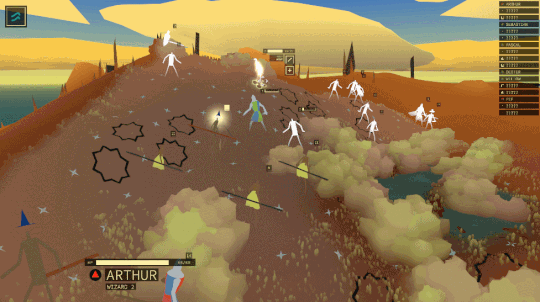
The Process, Context, Team
Tenderfoot was mostly a personal pet project for a long time. At one point I dreamed it'd be our follow-up to Eidolon, but other collaborators were less excited about the genre, and fans didn't seem so interested either, so rather than turning it into a big team production it became something I'd open up and noodle around with on my own. The main exception is Michael Bell, who started music explorations very early on. I think I still have them burned on a disc somewhere. I find that working on music and visuals together, from the start, has good results. They reflect on each other and shape each other, and become something richer in the process.
My life took a lot of turns between the beginning and end of the project. So while it technically took 6 years or so (2014 to 2020), I think it's important to spell out how much *else* I did during that time.
- independently released 7 other games (The Absence of Is, Viridi, Yule Log, Tenderfoot, Fire Place, BEACH BITCH, Pattern), three of which (Viridi, Fire Place, Pattern) were major, years-long, collaborative projects
- had periods of full time employment at two separate companies, one as the primary Unity dev at a small creative agency, the other as a bit player on a major game engine
- four periods of contract work: two short jobs as a lead, then two periods with the group that would later become Very Very Spaceship
- two attempts at restructuring Ice Water Games into a more ideal version of itself: once in 2014-15, attempting to make it a more standard coop, then in 2018-19 successfully making it the collective label it is today
- helped with the IWG-onboarding and marketing of 4 games with which I was not directly involved as an artist (Rainstorm EP, Ritual of the Moon, Stones of Solace, NUTS)
This is only from my own perspective obviously, but it tells a story anyway. If you take my ~6150 hours and turn them into 'work years' on the 40 hour scale, Tenderfoot took about 3 of my own work years (plus one cumulative year from the rest of the team). Realistically the way I work is not so standard. I work a lot in the evenings and weekends. I often take afternoon naps, and always take long dog walks in the late mornings. I sometimes struggle with the feeling that I shouldn't be working at certain times, or should be working at others. But I try to follow my own joy and desire, and not get too caught up in societal standards.
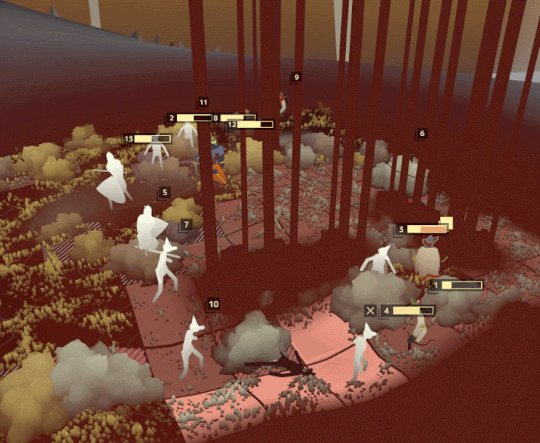
Isa Hutchinson, who helped a lot with design and eventually took over a significant amount of writing work, was involved from relatively early on as the friend I'd go to asking for feedback and advice. The escalation from off-team advice-giver to on-team designer was sort of gradual and unclear, hard to demarcate.
Otherwise, the team came together fairly late, as the project got more serious and I felt more able/willing to ask for help. Zoe Vartanian (UI, voice) and Taylor Thomas (UX) came on near the end of 2019 to help overhaul the interface after our first prologue. Madison Pathe (video, social) joined in early 2020 to support with trailers and marketing, and ended up working on a couple in-game cinematics as well.
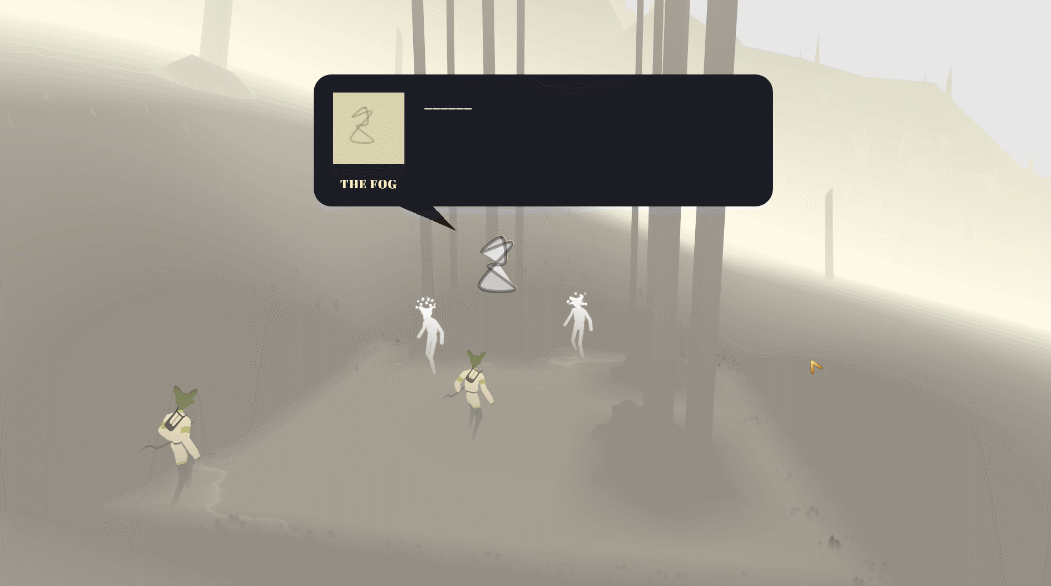
Independence
I mentioned above that we didn't have funding support for Tenderfoot. I flirted with publishers at a certain point, mostly in 2019. I was fairly serious and interested at the time. Working without funding is extremely limiting, and marketing and publishing a game yourself while also going through release development, which often already involves a lot of late hours, can be hellish.
Having a publishing partner that you can trust, a partner that treats you well and looks out for you, sounds honestly magical. But trusting a publisher is something that basically nobody recommends, including the developers who have long, seemingly positive relationships with their own publishers. And most stories you hear, if you ask anyone other than those lucky few, are of hopeful careers being sabotaged and destroyed because they trusted a publisher.
My feeling at the time was that we had spent years developing this without support, had launched games without support before, and so knew we could technically do it ourselves. It was the less risky option. And the publishers I did try to trust gave me good reasons not to trust them. All gave me offers that were offensively bad, and those that I pushed back on openly lied to me during negotiations (e.g. telling me that no publisher offered X terms, when those terms were relatively common and well known). Who knows what could have happened if we'd gotten support. The game would probably be better, and I'm sure would have sold more copies. Someone would have made more money. Maybe even somebody on the team.
We ended up self-publishing through Ice Water Games. At the time I felt really unsure about this decision, partially because I wasn't sure Tenderfoot felt appropriate to the label. But I like the idea of the label being shaped by the artists on it, rather than the artists being pushed to make work constrained by the label's aesthetic.
I also feel that Ice Water Games, while it is a long ways away, has the potential to become the kind of publishing partner that I dream about. And the challenges we face now may pay off in that future. Regardless, I think we'll try to self publish our next project through IWG as well. Still stuck in that loop of: technically we can afford to, it's less risky, and it might have a long-term upside.
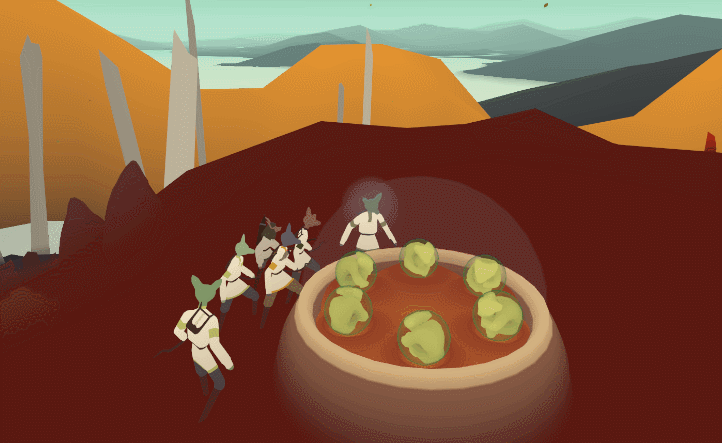
July 4, 2021